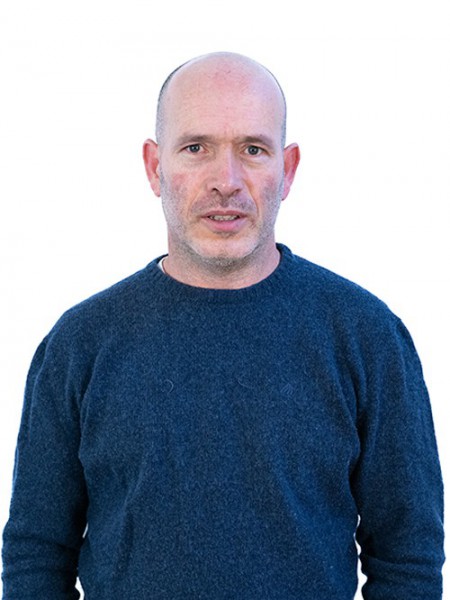abstract
Hydrothermal reactions between rare-earth ( RE) chloride salts and N(carboxymethyl) iminodi(methylphosphonic acid) (H(5)cmp) led to the isolation of a series of layered networks formulated as [RE(H(2)cmp)(H(2)O)] [RE(3+) Y(3+), La(3+), Pr(3+), Nd(3+), Sm(3+), Eu(3+), Gd(3+), Tb(3+), Dy(3+), Ho(3+) and Er(3+)]. All compounds were isolated as micro-crystalline powders ( many of which were nano-sized in thickness), with the plate-like crystallites found to exhibit preferential growth perpendicular to the [002] vector, a feature which seems to favour catalytic performance. Full structural elucidation was attained by the combination of synchrotron radiation (micro-crystal and powder) diffraction data, solid-state NMR studies ((1)H, (13)C and (31)P) and photophysical measurements. Materials consist of (2)(infinity)[RE(H(2)cmp)(H(2)O)] layers in the ab plane of the unit cell, constructed from a single RE(3+) centre (in a highly distorted dodecahedral coordination environment with one water molecule in the first coordination sphere) and one H(2)cmp(3-) ligand present in a zwitterionic form. Connections between layers along the c-axis are assured by strong and highly directional O-H center dot center dot center dot O hydrogen bonds involving the protonated phosphonate group (donor) of one layer and one oxygen atom ( acceptor) of the carboxylate group in the adjacent layer. The network is an unprecedented 12-connected uninodal plane net with total Schafli symbol 3(30).4(34).5(2). The Eu3+ material is photoluminescent at room temperature and 12 K with (5)D(0) lifetimes of 0.86 +/- 0.01 ms and 0.89 +/- 0.01 ms, respectively. Studies of the mixed-lanthanide diluted [(Gd(0.95)Eu(0.05))(H(2)cmp)(H(2)O)] material showed that Gd(3+)-to-Eu(3+) energy transfer occurs within the layers. The coordinated water molecule plays a decisive role in the non-radiative relaxation process of the Eu3+ emission. All synthesised materials were further tested in the cyclodehydration of xylose to furfural, with the observed results comparing quite favourably with those from other solid acid catalysts used in the same reaction under similar conditions. A detailed catalytic study was performed for [Y(H(2)cmp)(H(2)O)]: selectivity increased to 84% as the conversion reached 83%; this solid was also re-used successfully in three consecutive 4 h runs after separation from the liquid phase by centrifugation and regeneration using either thermal treatment at 280 degrees C or repeated washing with solvents. All materials have been routinely characterized using vibrational spectroscopy (ATR-FT-IR and FT-Raman), thermogravimetric analyses, SEM investigations and CHN elemental composition.
keywords
METAL-ORGANIC FRAMEWORKS; LIQUID-PHASE DEHYDRATION; CAMBRIDGE STRUCTURAL DATABASE; COORDINATION POLYMERS; HYDROGEN STORAGE; D-XYLOSE; GAS-ADSORPTION; ACID CATALYSTS; LANTHANIDE PHOSPHONATES; HYDROTHERMAL SYNTHESIS
subject category
Chemistry; Materials Science
authors
Cunha-Silva, L; Lima, S; Ananias, D; Silva, P; Mafra, L; Carlos, LD; Pillinger, M; Valente, AA; Paz, FAA; Rocha, J
our authors
Groups
G1 - Porous Materials and Nanosystems
G2 - Photonic, Electronic and Magnetic Materials
G4 - Renewable Materials and Circular Economy
Projects
Nanogotas de Água em Materiais Microporosos e Híbridos Orgânicos-Inorgânicos (PTDC/QUI/65805/2006)
acknowledgements
We are grateful to Fundacao para a Ciencia e a Tecnologia (Portugal) for their general financial support ( R& D projects: PPCDT/QUI/58377/2004 and PTDC/QUI/65805/2006), for the post-doctoral research grants SFRH/BPD/34895/2007 ( to L. C.S.), SFRH/ BPD/23765/2005 ( to S. L.) and SFRH/BPD/40695/2007 ( to D. A.). We acknowledge the European Synchrotron Radiation Facility ( Grenoble, France) for granting access time to the BM01 and ID31 beam lines. We also wish to express our gratitude to Dr Fernando Domingues ( Department of Chemistry, University of Aveiro) for access to HPLC equipment, to Professor Jacek Klinowski ( Department of Chemistry, University of Cambridge) for access to departmental facilities, and to Manuel Silva for assistance with some of the SEM measurements.








